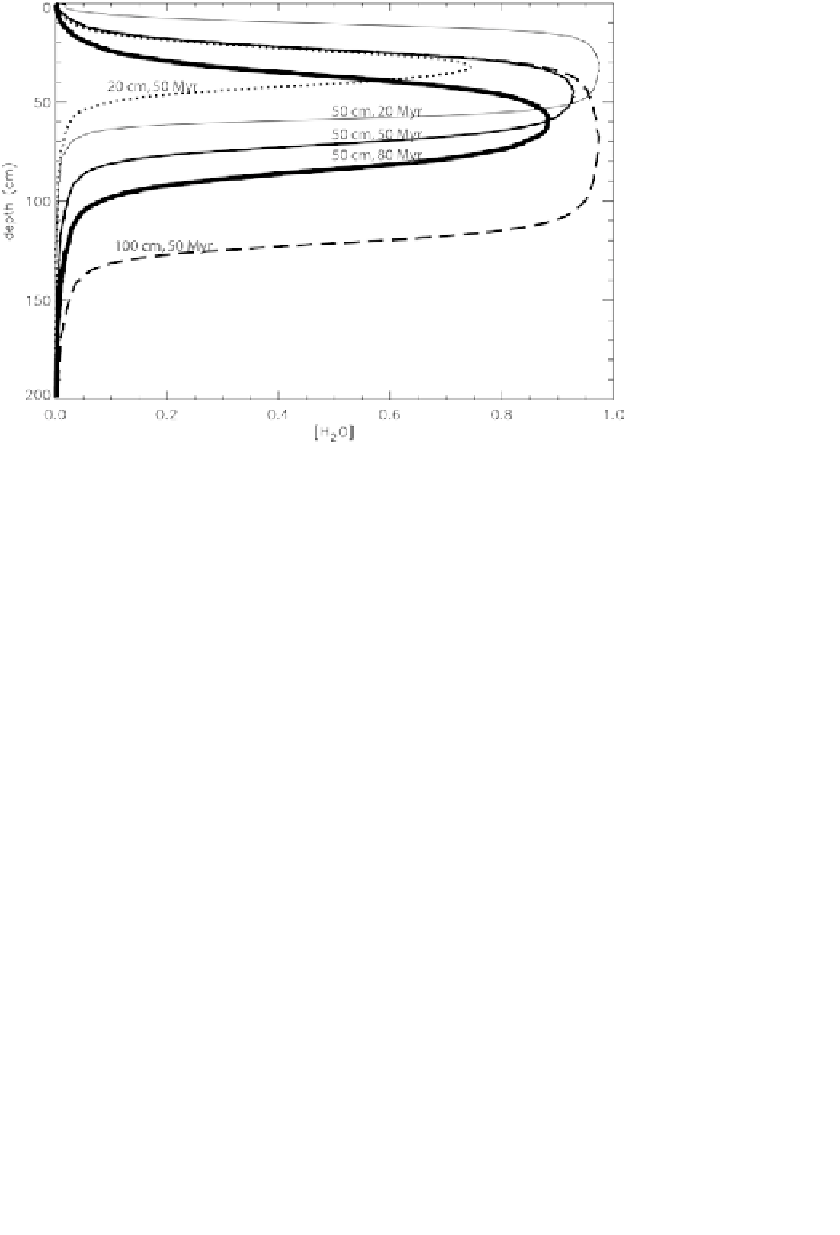Geoscience Reference
In-Depth Information
Fig. 1. Several depth profiles are given for a weathered ice layer on Mercury. The
three solid lines are for an ice layer initially 50 cm thick after 20, 50, and 80 Myr (with
increasing line thickness). The dashed lines show a weathered ice layer after 50 Myr that
was initially 20 (dotted) and 100 cm (dashed) thick.
the medium thickness solid line. In order to have a layer of dry regolith cover
a few tens of cm thick, the time of emplacement is constrained to about
50 Myr ago. The burial rate at Mercury is 0.43 cm/Myr.
14
Note that the
thick solid curve in Fig. 1 shows that at an age of 80 Myr, the deposit would
be covered with more dry regolith than indicated by the radar observations.
The thin curve suggests that after 20 Myr, there is not enough material
covering the deposit to be consistent with the observations.
Similarly, the purity of ice required for the coherent radar backscatter
sets a strict condition on the ice in hermean PSR. Unless there is a mech-
anism that we have not considered that concentrates ice in the PSR, the
ice would have to have been deposited in an episodic event, e.g., a comet
impact. Also provided in Fig. 1 are the expected profile for each of three
ice layers of different initial thickness (20, 50, and 100 cm) 50 Myr after
emplacement. An interesting effect is that the peaks are buried to the same
depth, offset by the difference in the initial thickness.
14
Also, the profiles
look very similar on the top-side until the peak concentration is reached.
The dotted profile is for a layer initially 20 cm thick. The dashed profile
is for a 100 cm thick layer. Both the 50 and 100 cm layers have su
cient









